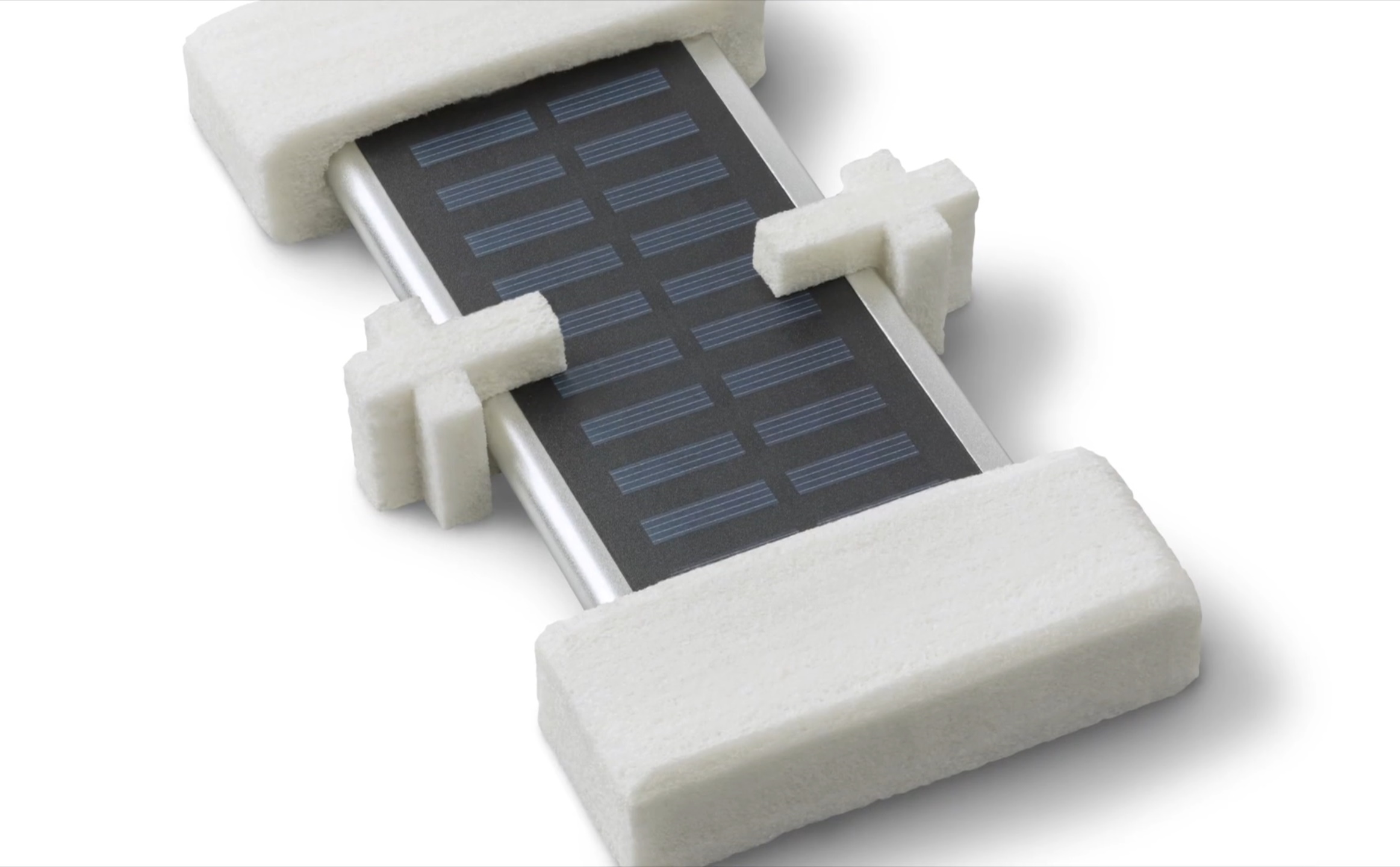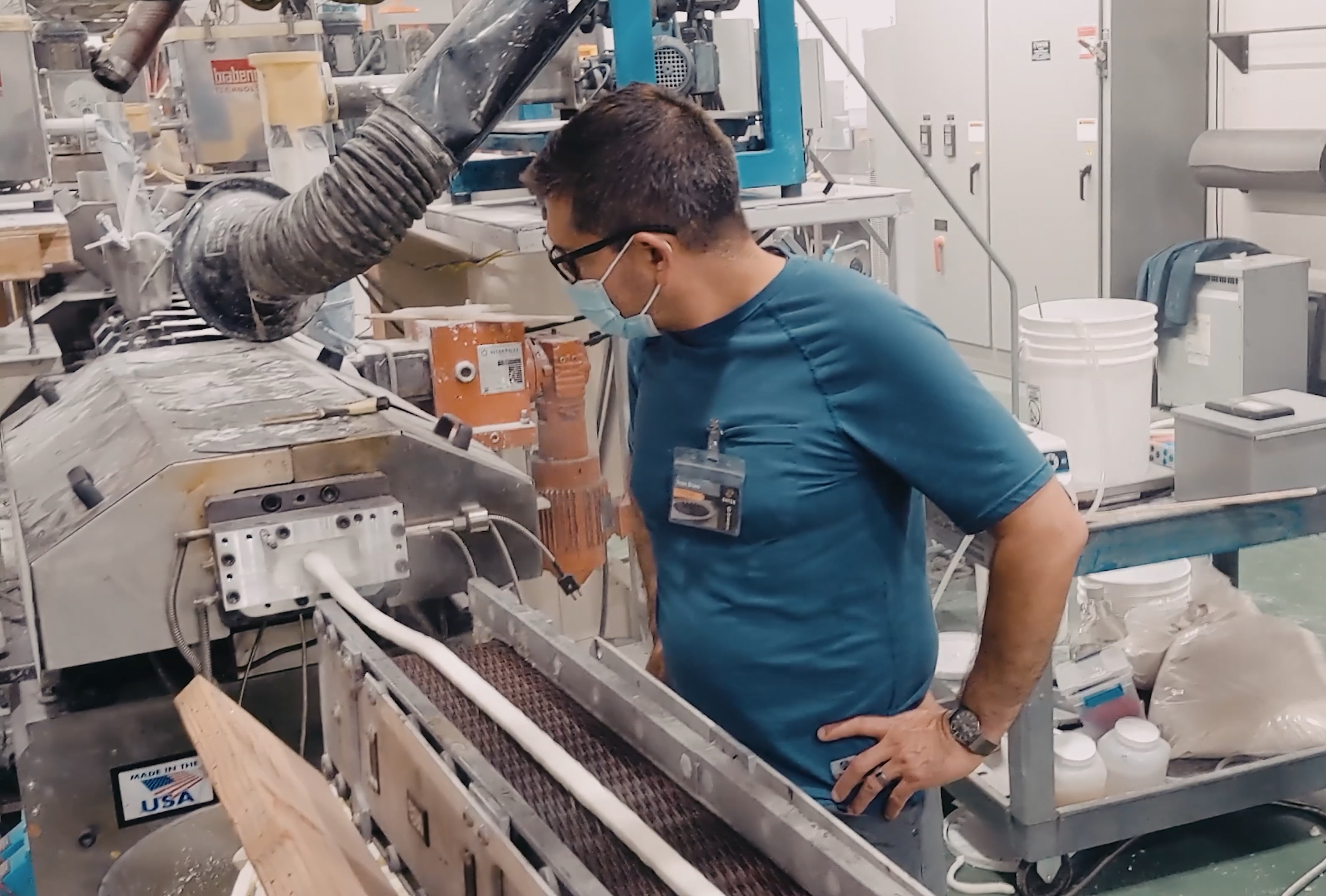The best way to remove plastics from the ecosystem is to make sure they never get there in the first place, and Cruz Foam is well on its way to replacing some of the worst ones out there with its naturally-derived and compostable alternative — and the company just landed an $18M series A to do it faster.
Cruz Foam creates materials out of chitin, which is what makes up the shells of most crustaceans, like crabs, shrimp, lobsters and many land insects as well. It’s strong, stable, totally biodegradable, and boy is it plentiful: there are mountains of this stuff for the taking outside every seafood processing plant.
The company, whose founder John Felts I met in Alaska during the Accelerator at Sea, has been scrappily humming along prototyping various ways to turn chitin and a few other natural ingredients into a material that can replace polystyrene foam (EPS, like Styrofoam) and other common plastic packaging.
They got their first big break last year when Whirlpool tapped them to make a few pieces for their appliance boxes, and now, having proved out the idea, Cruz Foam is getting ready to break into half a dozen more industries.
“A lot of what we’re focusing on is those two initial areas – packaging that replaces polyethylene and polystyrene foam. But demand is growing in other avenues: cold chain, CPG [consumer packaged goods], ecommerce, etc. People asking about construction, or how we can do injection molding. It’s exciting to see so much potential,” said Felts.
The need to prototype and test these possibilities is one reason for the company raising such a considerably-sized round. They just bought a new extruder (foam like this is essentially printed using specialized equipment) and have been experimenting with all kinds of new form factors, driven by partners and potential partners across many industries.
It helps that a number of laws and trends have steadily pushed companies towards eco-friendly alternatives to plastic or even cardboard.
“Putting the ownership of waste and the collection back on the people that produce packages, you’re seeing a broad change in ESG goals,” he said. “It used to be, ‘OK, we’re going to be carbon neutral by 2030.’ Like, what does that mean? So we’re seeing real granularity in what that means now — is it packaging, is it energy use, what are the milestones, the two-year, three-year marks? That’s how you know they’re serious.”

Cruz Foam enclosures for a piece of consumer electronics.
Suddenly, it seems, everyone from goods manufacturers to the people who produce plastic foam are looking for full-stack alternatives, even if there isn’t cost parity. They see the writing on the wall, and the idea of being caught unprepared when a (say) ban on EPS kicks them out of west coast markets is a scary one.
Felts said that the company is in talks with several of the largest manufacturers of packaging foam, working with them on a deal that would see them actually making chitin-based materials and sharing the glory with Cruz Foam.
The truth there, though, is that neither party has much choice. The manufacturers need to prepare for a greener future, and Cruz Foam doesn’t have even a fraction of the machines it would need to meet demand. Felts said they never intended to actually do the manufacturing.
“You literally can’t. Buying this extruder, it took 6 months,” he said, and even that was a miracle. “Can you imagine scaling a business if it took you two years to get one machine? You have to use the infrastructure that’s in place.”

A ribbon of foam is extruded.
Whoever makes it, you’ll probably be seeing more of their products soon. The company showed me some prototypes and new verticals it was working on, though it can’t announce any of its new partners or customers until the contracts or agreements are finalized, or in some cases until the requisite patents are filed. Suffice it so say that the company is going well beyond simply replacing a foam insert here and a molded shape there.
The products Cruz Foam makes are generally compostable in the most broadly accepted sense, that you could just throw them in your yard and they’ll be gone in a month or two (and might even give your plants a boost). But because it’s being mated with cardboard and other materials, the company continues to face the challenge of how to make these things mesh with existing municipal waste systems. Is it recyclable according to Sacramento’s definition of the word? What about yard waste — does it technically break the rule there, and does anyone care?
“The government needs to define standards for a new gen of compostable products – you’ve got to make it a no-brainer for customers,” Felts said. At least even if it goes in the wrong bin, it still degrades gracefully.
The $18 million funding round was led by “global problem-solving organization” Helena, with participation from One Small Planet, Regeneration.VC, At One Ventures, and SoundWaves.
The money will go towards expanding operations as well as R&D.
“Out biggest focus is commercial production and revenue generation, until next year,” he said. “We’re filing tons of patents. A lot of growing the operational footprint of this company; we’re moving to new HQ, now up to 30 people.”
With Cruz Foam focusing on the creative and sales work and working with existing manufacturers to actually make the stuff, 2023 could be the year the company goes from niche to mainstream. Watch your doorstep for the trademark CF (or as I prefer to see it, interlocking crustacean claws) on or in your delivery.
Cruz Foam’s chitin-based packaging brings in $18M as industries scramble to go green by Devin Coldewey originally published on TechCrunch
DUOS





